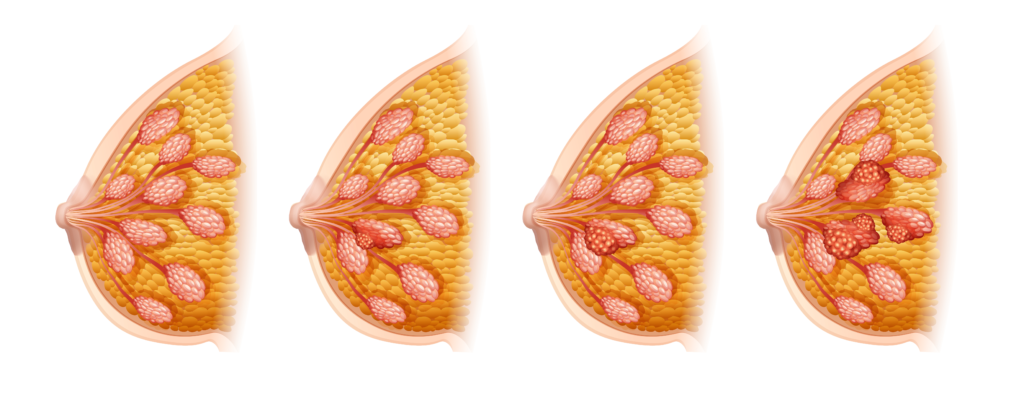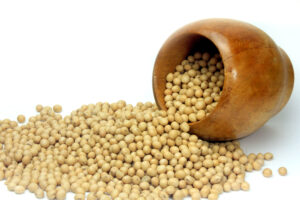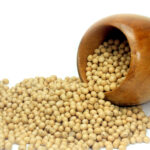Paget’s disease of the breast is an uncommon type of breast cancer that usually first shows as changes to the nipple. It occurs in less than 5% of all women with breast cancer, and yes, men can also get Paget’s disease, but this is very rare.
Diagnosing Paget’s disease
As Paget’s disease is rare and can look like other skin conditions, it’s not always diagnosed straight away. Once your health provider has referred you to a specialist, you may have several tests, including:
-
- A mammogram (a breast x-ray)
- An ultrasound scan (uses high-frequency sound waves to produce an image)
- A biopsy
Causes and Risk Factors of Paget Breast Disease
Scientists still don’t know what causes Paget cancer, but ongoing research is creating new clues. We know it involves abnormal changes to specific cells in your body that divide and replicate uncontrollably. Current research suggests that these cellular changes may begin with your DNA or genetic code. But we don’t know why these changes occur when they do.
Scientists have noticed that certain “risk factors” are often present when cancer occurs, and they believe these factors might contribute in some way. For example, you’re more likely to get cancer if you’ve been exposed to certain environmental toxins or if you smoke or drink alcohol more frequently. However, 85% of breast cancer occurs in people with no known risk factors.
The risk factors for Paget’s disease are similar to other types of breast cancer. They include:
-
- Age — the risk of developing the condition increases with age
- having a personal history of breast cancer or certain breast conditions
- A family history of breast cancer
- A history of benign breast disease
- Dense breast tissue
- Obesity
- Exposure to radiation
- Race — Caucasian women have a higher risk of breast cancer
- Using a combination of estrogen-progestin hormone replacement therapy after menopause
- having genetic differences that link to breast cancer, such as BRCA1 or BRCA2 genes
Symptoms
Paget’s disease of the breast affects your nipple and usually the skin (areola) surrounding it. It’s easy to mistake the signs and symptoms of Paget’s disease of the breast for skin irritation (dermatitis) or another noncancerous (benign) skin condition.
Possible signs and symptoms of Paget’s disease of the breast include:
-
- Flaky or scaly skin on your nipple
- Crusty, oozing, or hardened skin resembling eczema on the nipple, areola, or both
- Itching
- Redness
- A tingling or burning sensation
- Straw-colored or bloody nipple discharge
- A flattened or turned-in (inverted) nipple
- A lump in the breast
- Thickening skin on the breast
Treatments for Paget’s Breast Disease
The primary treatment is surgery. You have surgery to remove just the affected area (breast-conserving surgery) or the whole breast (mastectomy). Once the surgery has been performed, additional treatments may also be used, including:
-
- Surgery to remove the affected tissue can be performed in different ways. A lumpectomy, the most conservative option, removes the affected tissue while preserving as much of the natural breast tissue as possible. This is often paired with radiation therapy. On the other hand, a mastectomy involves the removal of the entire breast, which may be necessary depending on the stage and spread of the cancer. For some patients, a mastectomy, which involves the removal of all breast tissue, maybe the most suitable treatment. There are various types of mastectomy surgeries, including nipple-sparing and skin-sparing options, each with its unique benefits and considerations. Removing the lymph nodes in the underarms may also be needed. This can be done as a sentinel lymph node biopsy or axillary lymph node dissection.
- Radiation therapy, a highly effective treatment, may be part of your additional treatments. It uses high-energy radiation to kill cancer cells. The radiation may be directed from outside the body (external) or from an implant placed inside the breast. Chemotherapy uses drugs to kill cancer cells. The drugs may be provided as pills or IVs.
- Hormone therapy is another effective treatment option. Estrogen has been associated with breast cancer, and for some patients, hormone therapy may be an option. This method of treatment blocks estrogen from reaching the breast tissue, offering hope in the fight against cancer.
Breast-conserving surgery
Removing just the affected area and a border of healthy tissue is possible for some women. The surgeon usually removes the nipple and areola. You can then have a new nipple made later, usually when you have fully recovered from your treatment. There are different ways to recreate a new nipple, these include:
- Having a nipple tattoo
- Having a nipple made from your body tissue or fat
- Adhesive nipple(s)
After surgery, you then have radiotherapy for the rest of the breast.
SUMMARY
The cause of Paget’s disease of the breast is unknown, although there does appear to be a link between an underlying ductal cancer and the disease.
Paget’s disease of the breast is early-stage breast cancer of the milk ducts that occur in the nipple. It’s sometimes accompanied by more invasive breast cancer. You may notice nipple changes such as crusting, skin flaking, discharge, or a raw area that doesn’t heal. The earlier you identify and treat it, the better your outcome will be. Many people fully recover, and with the proper treatment, you can too. Surgery is often necessary to remove it, but it’s a step towards your full recovery.
Your healthcare team, a group of dedicated professionals, will be with you every step of the way if you have Paget disease of the breast. They will create a treatment plan tailored just for you. Surgery is usually the primary treatment. You may be offered other treatments based on whether you have invasive ductal carcinoma or DCIS and if the cancer has spread to lymph nodes. These treatments may include radiation therapy, hormonal therapy, chemotherapy, or targeted therapy.
Many of these symptoms can confuse skin conditions like eczema or dermatitis. As a result, many people show signs of Paget disease for several months before it is diagnosed. Partly due to these later-than-normal diagnoses, the survival rate for Paget disease is slightly lower than for breast cancer overall. However, if the disease is caught early, the chances of a cure are high.
If a doctor suspects a patient has Paget disease of the breast, the breast should be imaged. This can be done by a mammogram, which is a low-dose x-ray of the breast, or possibly an ultrasound, which uses sound waves to create an image of the breast tissue. A small tissue sample is retrieved if anything suspicious appears in the image, such as a lump or calcified tissue. This is often done during the imaging exam. From there, a pathologist will study the tissue sample to make a diagnosis.
References
BreastCancer.org
Cedar-Sini.org
ClevelandClinic.org
Mayo Clinic
MDAnderson.org










